For several years I toyed with the idea of embarking on some type of epic, encyclopedic journey through all of the plant families, researching and compiling all there is to know about ethnobotanical uses and other areas of personal interest for species in each plant family, one family at a time. The idea evolved over time and eventually morphed into this website. Plant taxonomy has long confused me, and plant family names intrigue me for inexplicable reasons. They seem like real families with long-lasting, essential characteristics, like the different houses of Hogwarts. What makes an Asparagaceae an Asparagaceae and a Zingiberaceae a Zingiberaceae? Is there a quiz I can take to find out which one I am? (The answer is no, but clearly that should be my next project).
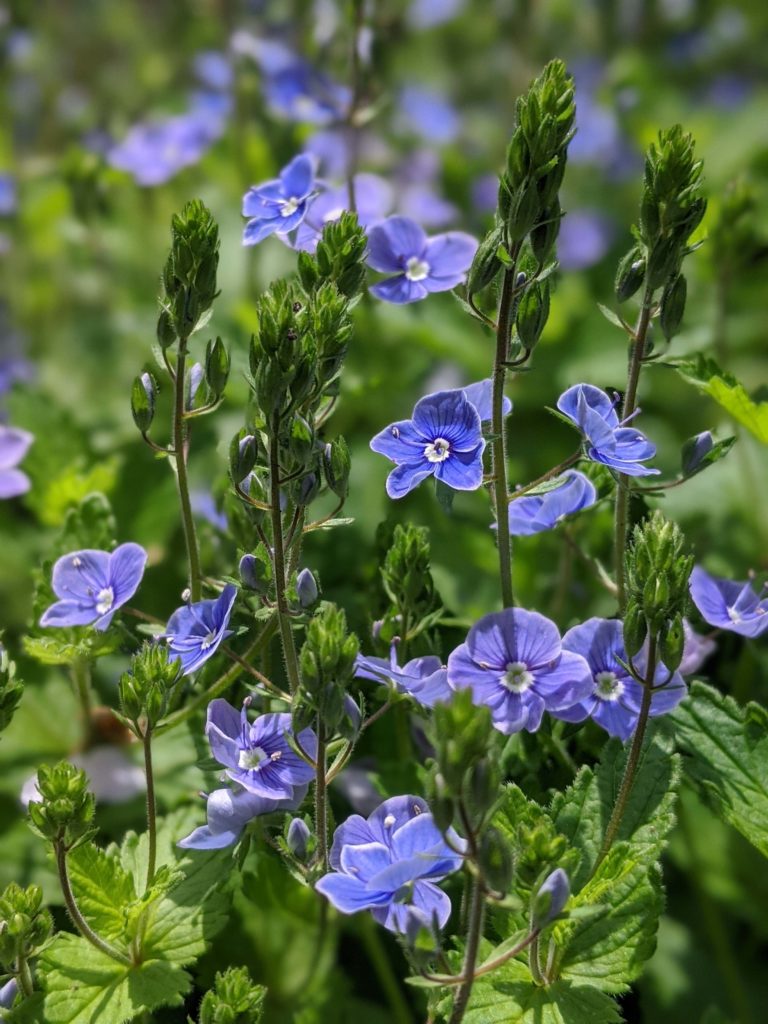

The plant that got me started was Veronica americana, or American speedwell, found growing along a stream at Retzer Nature Center. Just a casual walk in some nature in the height of Wisconsin spring when everything is mud and very little is growing. What began as a simple exercise in identifying the plant (triangulating between Google Lens, iNaturalist, and Internet searches) turned into a ruthless journey through time and space to learn about all Veronicas and then the entire plant family from which it came, Plantaginaceae. Here I am to tell you the highlights of that journey.
The plantain family is big: It contains 1,900 species, the most numerous being the speedwells or veronicas. Other well-known plants in this family are the snapdragons, toadflax, beardtongues, foxgloves, plantains, and firecracker plants. Of interest too are the waterhyssops and various twining climbers.

This family is big in plants that attract pollinators. Several genera boast flowers that look suspiciously like the bee or bird intended to be lured. The summer snapdragons (Angelonia spp.) are pollinated by bees that collect oil produced on the hairs of the flowers’ inner corollas. Rather than collecting nectar, the bees have adapted to collect floral oils.
Garden Ornamentals
As a pollinator group, it is no surprise that many of the flowers of Plantaginaceae species are beautiful and showy. The snapdragons, beardtongues, and foxgloves often have beautiful tubular flowers. The foxgloves (Digitalis spp.) exhibit varying combinations of polka dot airstrips attracting hummingbirds who follow them to the nectar.
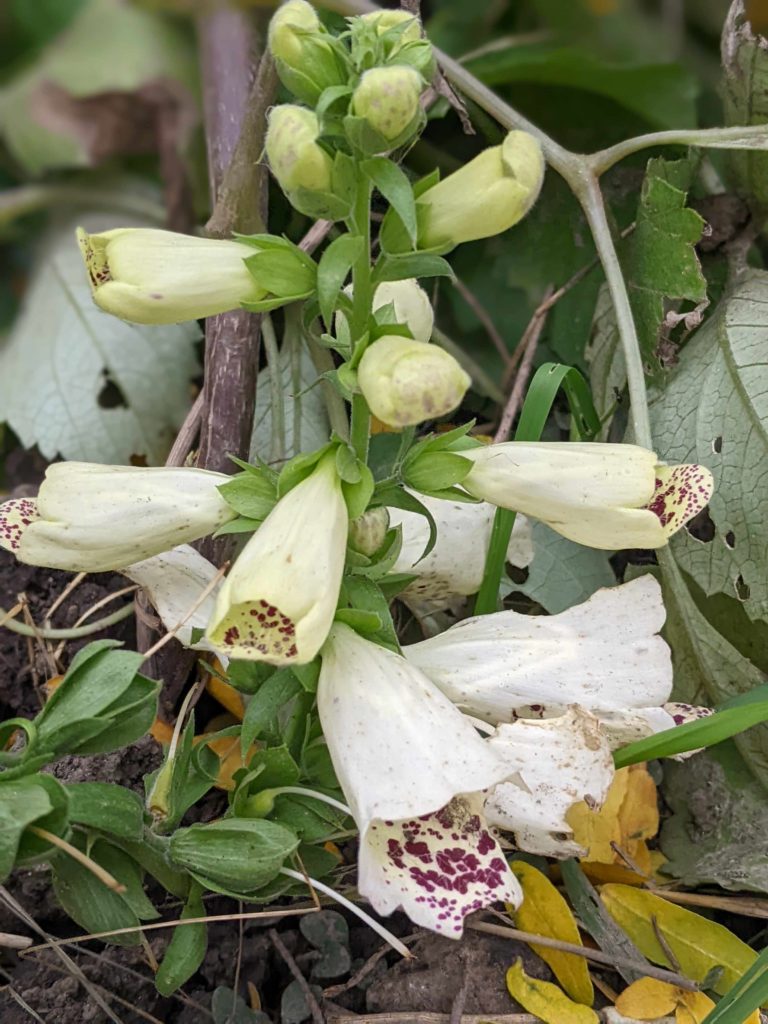
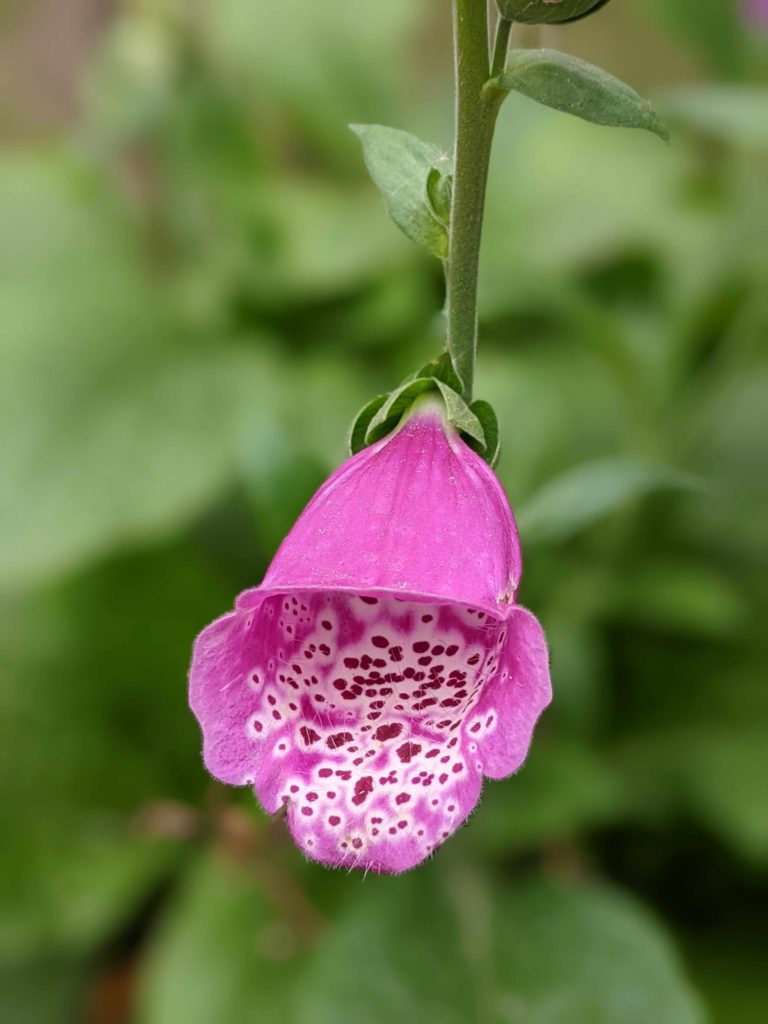
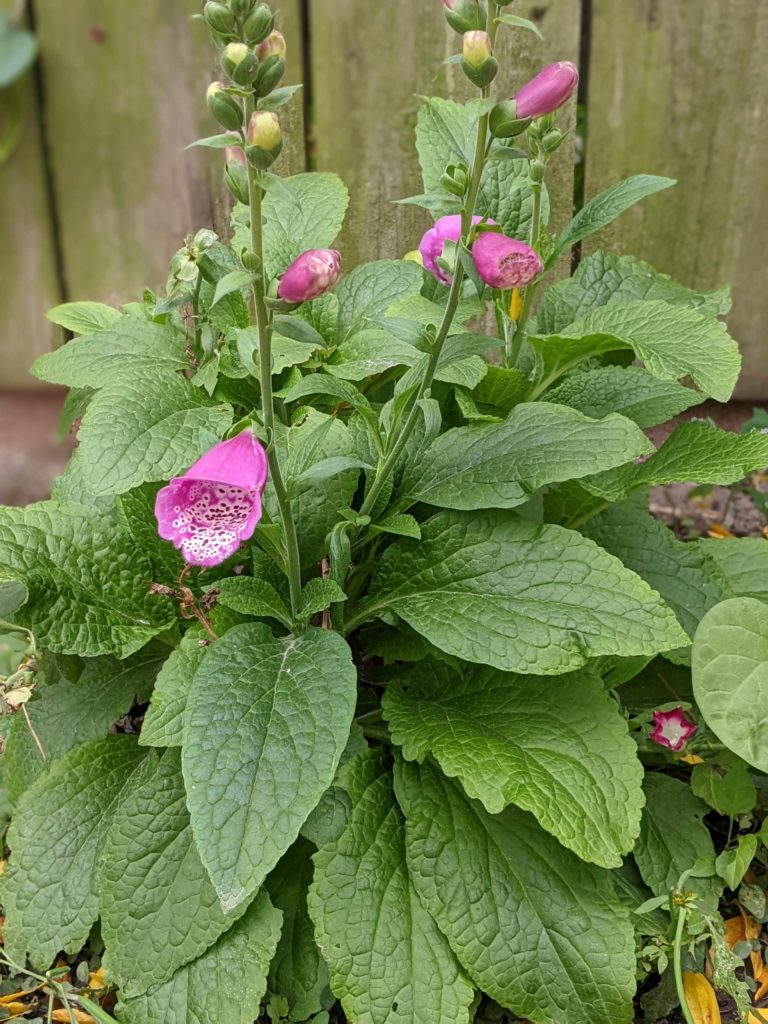
Beardtongues (Penstemon spp.) are characterized by a prominent staminode (an infertile stamen) that looks like a tongue, hence the name. They are the largest genus of flowering plants endemic to North America, with many of them native to dry landscapes. Flagstaff, Arizona lays claim to an annual Penstemon Festival.


Snapdragons are one of my personal favorites. They are so-called because when the flower’s throat is squeezed, it looks like the mouth of a dragon snapping open.
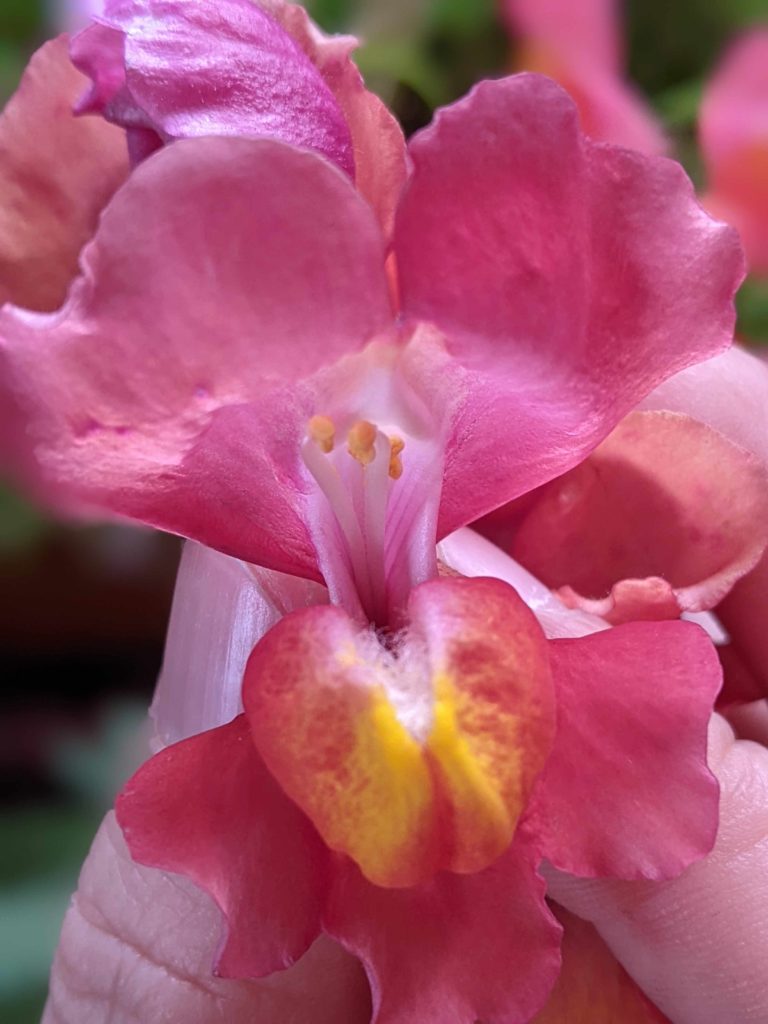
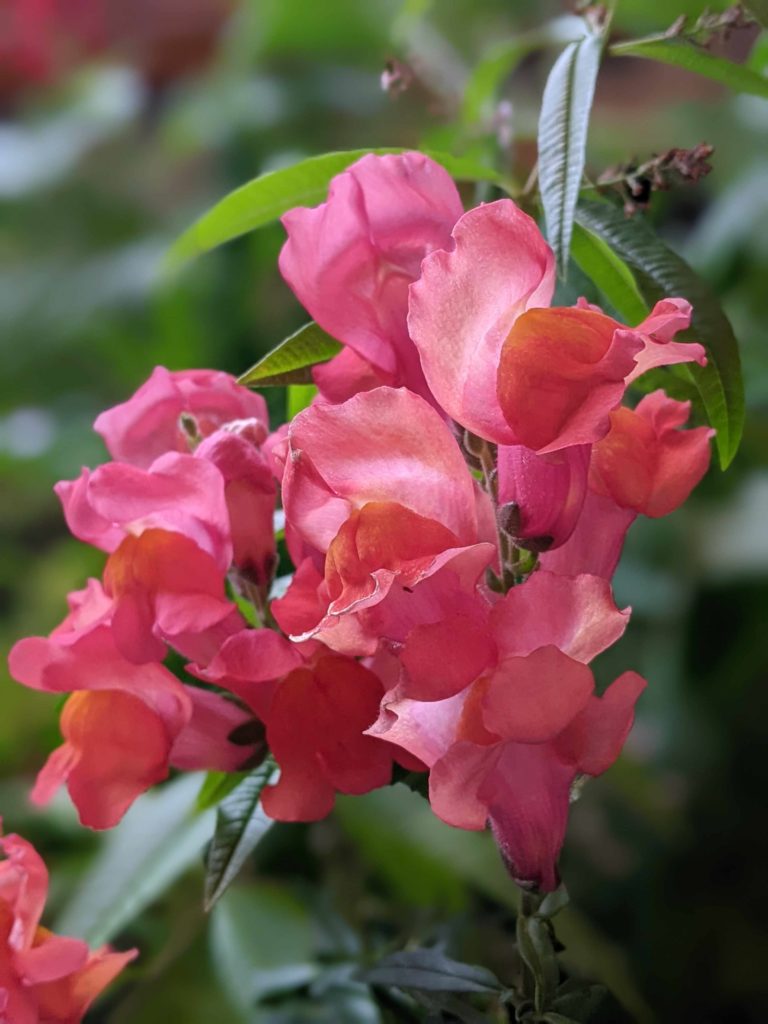
I also love the common toadflax or “butter and eggs,” which is in some places regarded as a weed. The lower orange tip or “egg” remains closed, requiring strong insects to open the flower to pollinate it.

Hot-Weather Twiners
This family also includes various forms of climbers with unique twining leaf stalks whose origins span Mexico, Guatemala, and the Southwestern United States. Common ornamentals include the angel’s trumpet or Mexican viper (Maurandya barclayana) and Lophospermum species. Also notable is the purple bell vine (Rhodochiton astrosanguineaus). The tubular shaped flowers of these species are often pollinated by long-tongued bees and hummingbirds.
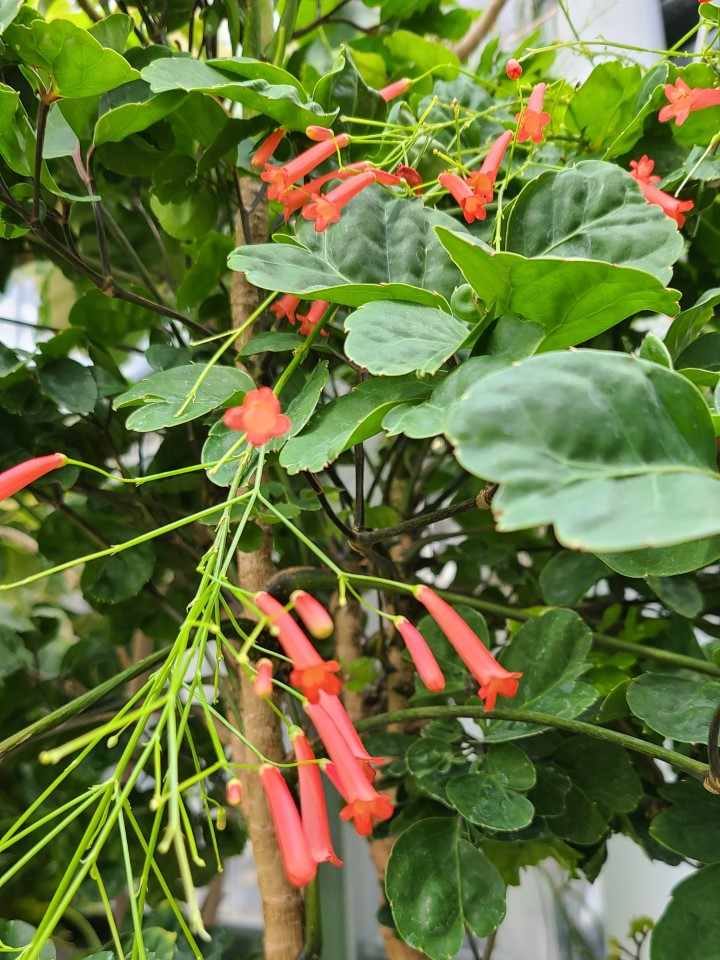

Other vining plants grow as ground-hugging mats along rocks and crevices. The rocklady (Homgrenanthe petrophila) grows out of limestone crevices with spines along its leaf edges. It is only known in about 10 locations, primarily in Death Valley.
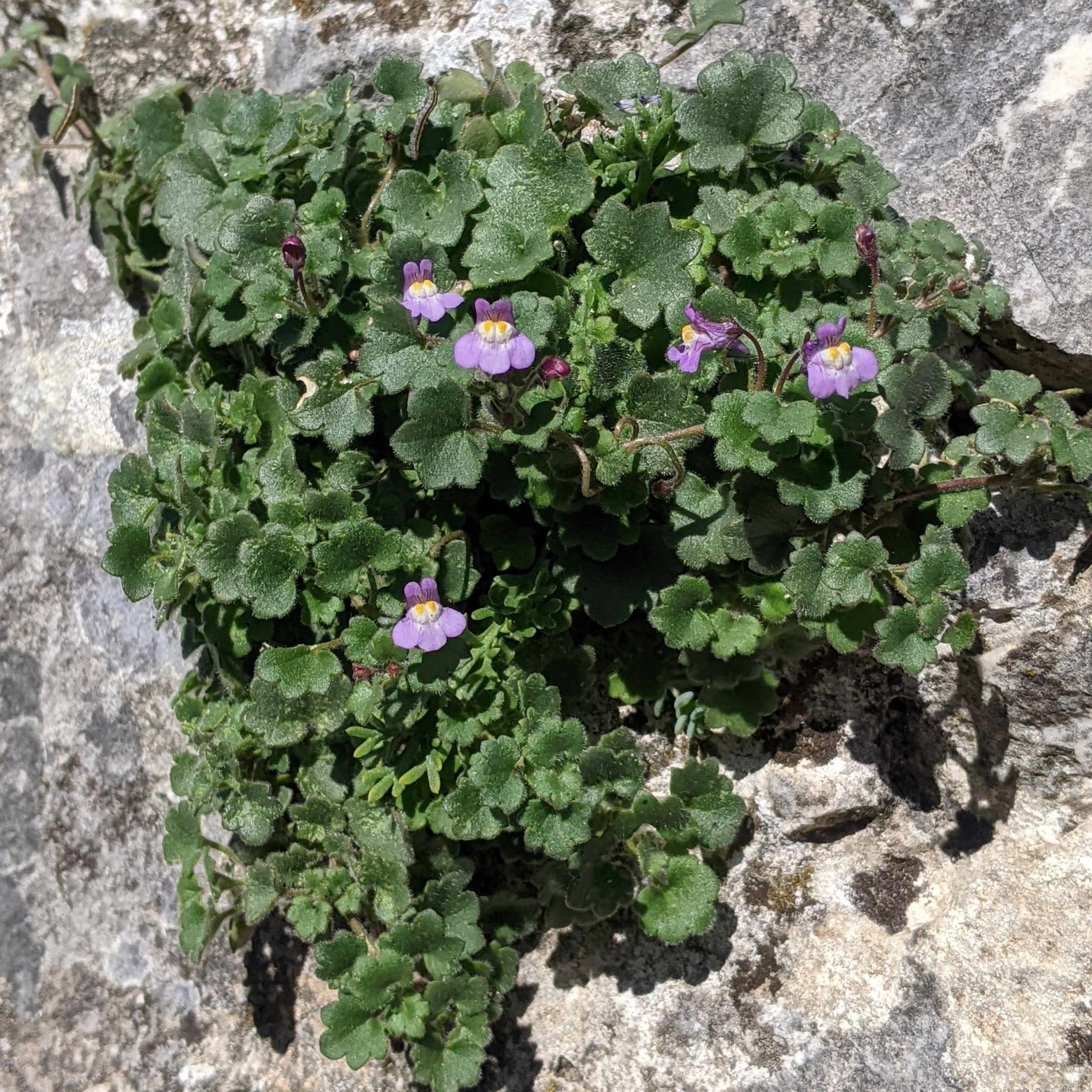
Tropical and Subtropical Species
Although the majority of Plantaginaceae species are native to temperate North American climates, some of them favor the tropical and subtropical realm. A number of ornamental plants of the Hebe genus are commonly selected for public gardens in South America, various Pacific Islands, and New Zealand, where it is the largest genus of plants. Their unique, conifer-like appearance looks similar to cypress sprays and is referred to as “whip-cord.” The unusual appearance compared to related species is a testament to the ways that island isolation can uniquely shape the evolution of a species. Meanwhile, the waterhyssops (Bacopa spp.), aquatic species that bear no botanical relation to hyssops, are commonly grown in containers. The crushed leaves purportedly have a lemony scent.
Folk Medicine
This family’s claim to fame is its long history of use in folk medicine—in particular, the plantains, speedwells, toadflaxes, foxgloves, and beardtongues. Common uses across many of them are in the treatment of bronchial and skin conditions as teas acting as expectorants in addition to poultices, balms, or rinses that treat skin maladies. The leptandrine in speedwell may be responsible for its expectorant properties. The tea is made from flowering stalks and can also be iced with a splash of lemon juice added. Foxglove also has a well-known history as the source of heart medicine digoxin—though its toxic nature causes it to be referred to as dead man’s bells or witch’s gloves. Health food stores are stocked with psyllium, which comes from seed husks of some plantain species that expand and become mucilaginous when wet, aiding in the treatment of gastrointestinal upsets. Plantains and speedwells are also nutritious. The leaves of some species of both can be harvested young for salads, green sauce, soups, and so on.

Plantain (Plantago major) is one of most widely distributed medicinal plants worldwide, historically used in the form of a poultice to heal wounds, stings, sores, and other skin afflictions with active chemicals aucubin, allantoin, and mucilage. On a hike one summer, my Russian-American friend was overjoyed to see this plant growing everywhere. She said that Russian people call it the magic plant that is an unquestioned cure all for skin torments (specifically blisters). I found this amusing because it is a plant that I see everywhere–sidewalk cracks, disturbed roadsides, etc–and that I rarely bother to think twice about. But as someone living in California, it had been a long time since she saw the magic plant growing so prolifically. A great example of how we can take things for granted based on our location!
| Plantain Salve/Ointment Recipe |
| Ingredients: 1 cup dried plantain leaves 1/4-1/2 cup oil (sunflower, jojoba, sweet almond, olive, etc.) Optional: 1 tsp beeswax (for thickening) 2-3 Vitamin E capsules (prolongs shelf life) Essential oils (for scent) |
| Directions: Chop the dry leaves and place them in a sterilized mason jar. Pour in the oil to cover the plant material. Shake and let sit for 2-3 weeks, periodically shaking the jar to make sure all of the herbal material gets infused. Strain the oil through a clean muslin or thick weave cheesecloth and put the infused oil in a clear new container. Add a few drops of tea tree, lavender, or other essential oil for a pleasant scent. If you prefer a thicker salve, you can mix the strained infusion with melted beeswax. You can also add the oil of a few Vitamin E capsules to prolong the shelf life to 1 year. |
Plantains and speedwells are also nutritious. The leaves of some species of both can be harvested young for salads, green sauce, soups, and so on. Plantain is high in calcium and vitamins. An unusual form of Plantago, P. maritima, grows in coastal locations and has succulent leaves that are eaten raw or cooked. I was also surprised to learn that an edible oil can be extracted from the seeds of snapdragon, which sometimes look like human skulls.
What began for me as an innocent investigation into what might be perceived as a fairly inconspicuous plant (and sometimes as a weed)—the plantain—led me to quite a few surprises, such as learning about the abundance of beautiful flowers in this plant family and the plants’ worldwide distribution in a variety of botanical forms. It is evident that families of plants can consist of quite diverse species, both geographically and botanically.
